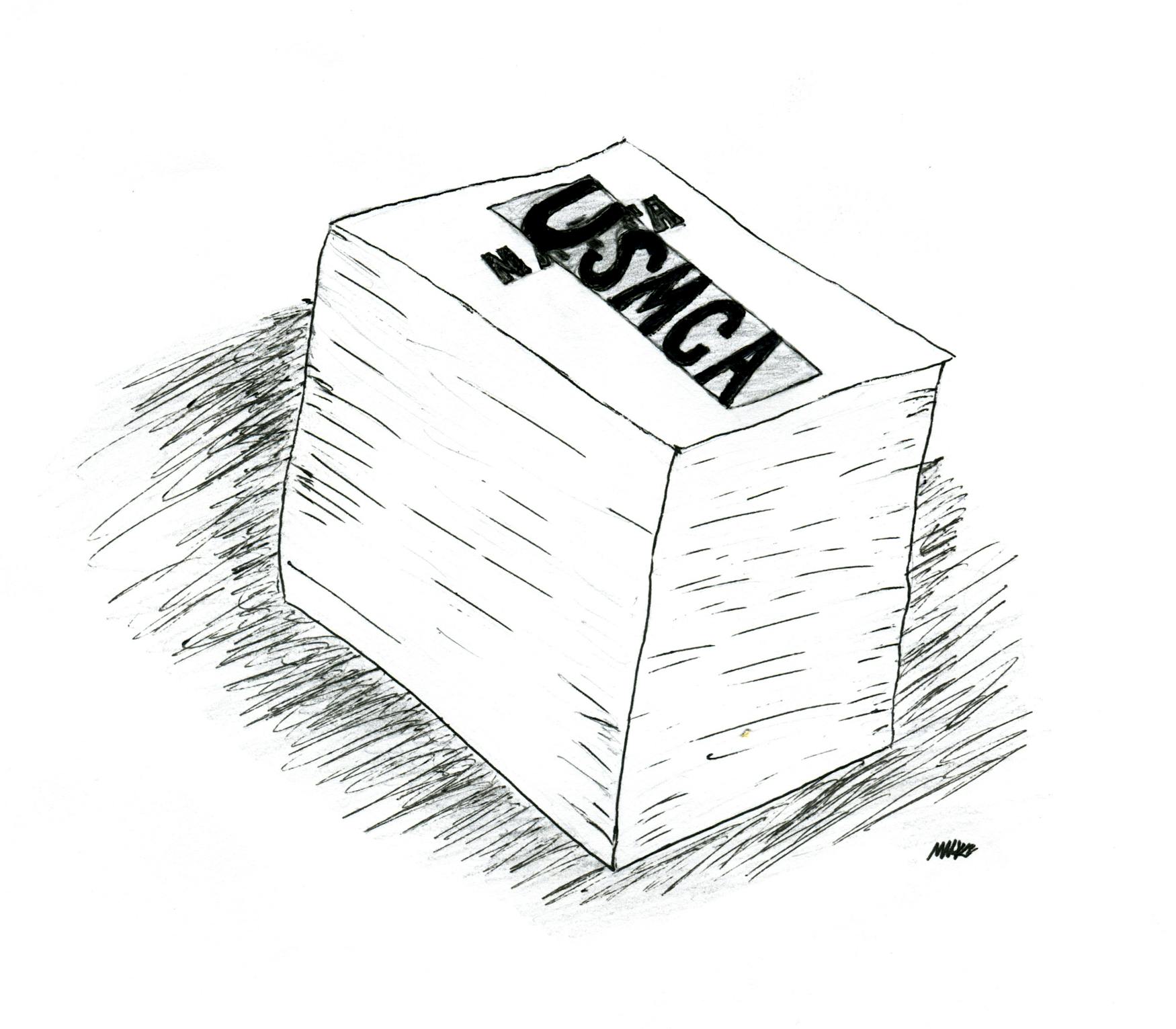The North American Free Trade Agreement: In Memoriam
After a 25-year lifespan in which is helped define the economic relationship between the United States, Canada and Mexico for the start of the 21st century, the North American Free Trade Agreement, better known as NAFTA, has finally been replaced. Its successor, the U.S.-Mexico-Canada Agreement, contains most of NAFTA’s provisions, with a few updates that help bridge its shortcomings. President Donald Trump, who was sharply critical of the old agreement, helped to negotiate the USMCA, alongside Canadian Prime Minister Justin Trudeau, Mexican President Enrique Peña Nieto and U.S. Trade Representative Robert Lighthizer.
Despite Trump’s claims that the USMCA is a “brand new deal,” it seems to essentially be NAFTA 2.0. The main objective of both deals is to lower North American trade barriers, and the new deal seems to keep most of NAFTA’s substance while fixing several of the old legislation’s largest issues. Like NAFTA, USMCA maintains standards for labor safety. It contains provisions for competitive wages in Mexican car manufacturing, a concern among American automakers who have to compete with lower employment costs there. It also benefits the American agricultural industry by reducing barriers in the Canadian dairy market. Even under NAFTA, Canada put significant tariffs on American dairy products, essentially closing off the Canadian market. This was a source of considerable ire for American farmers, and quickly became one of Trump’s causes célèbres, both on Twitter and at the 2018 Group of 7 meeting in Quebec.
Despite flaws such as these, though, NAFTA’s legacy deserves to be celebrated, and its significance to North American relations in a world where those relations are fraying ought to be reexamined.
The deal was initiated in 1988 by President George H.W. Bush. At that time, the United States and Canada already had a free trade agreement, and the main concern with the deal was over labor practices in Mexico. At the time, the Mexican economy was underdeveloped compared with those of America and Canada, and many Americans were concerned that jobs would be lost to Mexico. In the 1992 presidential debate, only Bush was in favor of the NAFTA deal. His challenger, a young Arkansas governor named Bill Clinton, wanted to renegotiate it, believing it would come at too great a cost to American workers. Ross Perot, a third-party candidate who opposed the deal, famously claimed that the trade deal would create a “giant sucking sound” of jobs migrating south of the Mexican border. Despite this, after defeating Bush, the new President Clinton supported the deal, and it entered law in 1994. 25 years later, it is essentially beyond dispute that NAFTA was good for the United States. A 2012 Initiative on Global Markets poll of leading American economists revealed that 95 percent either “strongly agreed” or “agreed” with the assertion that American citizens were better off under NAFTA than if the previous trade rules had been left in place.
Taken on its own, the renegotiated USMCA is a rare win for President Trump. The deal is a good one for the U.S. and speaks well of an embattled, scandal-laden president who was elected partially on the promise of being able to negotiate good deals. All else being equal, the president has succeeded admirably in this regard. Beneath the surface, though, the USMCA fails to adequately resolve the tension that the president’s actions have created or return North American relations to a pre-Trump era. NAFTA was negotiated in a post-Cold War, pre-9/11 world where the U.S. reigned as the sole superpower, her role as world guardian went unchallenged and nearly everyone desired better relations between our southern and northern neighbors. Neoliberal economic principles were dominant in government, and protectionist challenges were few and far between.
Despite USMCA’s successful negotiation, that world is far behind us. Donald Trump won the presidency in 2016 on a protectionist platform; he criticized the concept of free trade and repeatedly slammed NAFTA, calling it the “worst deal in history” and promising to get rid of it. On his first day in office, he withdrew the United States from the Trans-Pacific Partnership, a larger free trade deal between the United States and several Asian economies. Later, he started several trade wars, which he declared in a March 8 tweet were “good, and easy to win,” against American allies like Canada and the European Union. Such actions make it unclear whether Trump sees these countries as allies or adversaries and undermines confidence in our international partnerships. Indeed, at times it seems as if Trump sees the world as a zero-sum game; in his view, if Canada benefits from a trade agreement, the United States loses, and America should therefore conduct as little business with the outside world as possible.
In short, NAFTA is gone. We are no worse off for its loss – the new USMCA is a worthy successor in seemingly every respect. But it seems to me as if NAFTA itself is a metaphor for something past — if not for international commerce, then for genuine friendship between the three countries it affected, built on trust and mutual respect. Only a fool would think that this friendship has been restored because of the USMCA. I suspect that it will not be for a long, long time.



Please note All comments are eligible for publication in The Justice.